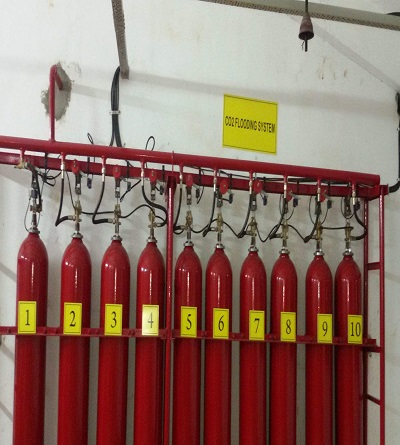The Benefits and Best Practices of CO2 Flooding Fire Suppression Systems
CO2 flooding fire suppression systems are an effective and efficient way to protect buildings and structures from the dangers of fire. These systems use the power of carbon dioxide (CO2) to extinguish fires and prevent damage. In this blog post, we will explore the benefits of CO2 flooding systems, best practices for their use, and key considerations for their installation.
The Benefits of CO2 Flooding Fire Suppression Systems

CO2 flooding systems offer a number of benefits over other types of fire suppression systems. Some of the key benefits include:
- Extinguishes fires quickly: CO2 is an extremely effective fire-extinguishing agent, and can quickly extinguish fires before they have a chance to cause significant damage.
- Suitable for sensitive environments: CO2 is a clean and safe extinguishing agent, making it suitable for use in environments where other agents, such as water or foam, could cause damage.
- Suitable for electrical equipment: CO2 is a safe and effective fire-extinguishing agent for electrical equipment and computer rooms, because it does not conduct electricity, and thus it won’t cause damage to the electrical equipment.
- Minimal residue: CO2 leaves minimal residue, which makes cleanup after a fire easier and less costly.
Best Practices and Key Considerations for CO2 Flooding Fire Suppression Systems
To ensure the best performance and protection from CO2 flooding fire suppression systems, it is important to follow best practices and consider key installation factors.
- Proper installation: CO2 flooding systems must be installed by a qualified professional and in accordance with local codes and regulations.
- Regular maintenance: CO2 flooding systems must be regularly maintained and tested to ensure they are in proper working condition.
- Training for employees: Employees should be trained on the proper use and operation of CO2 flooding systems.
- Proper labeling: CO2 system components should be properly labeled and identified to ensure proper operation in case of an emergency.
- Adequate ventilation: Adequate ventilation is a must to ensure that the CO2 is released into the atmosphere and not concentrated in any area in the protected space, to avoid asphyxiation.
In summary, CO2 flooding fire suppression systems are an effective and efficient way to protect buildings and structures from the dangers of fire. These systems offer a number of benefits, such as quick fire extinguishing, suitability for sensitive environments, and minimal residue. To ensure the best performance, it is important to follow best practices and consider key installation factors, such as proper installation, regular maintenance, employee training, proper labeling, and adequate ventilation.